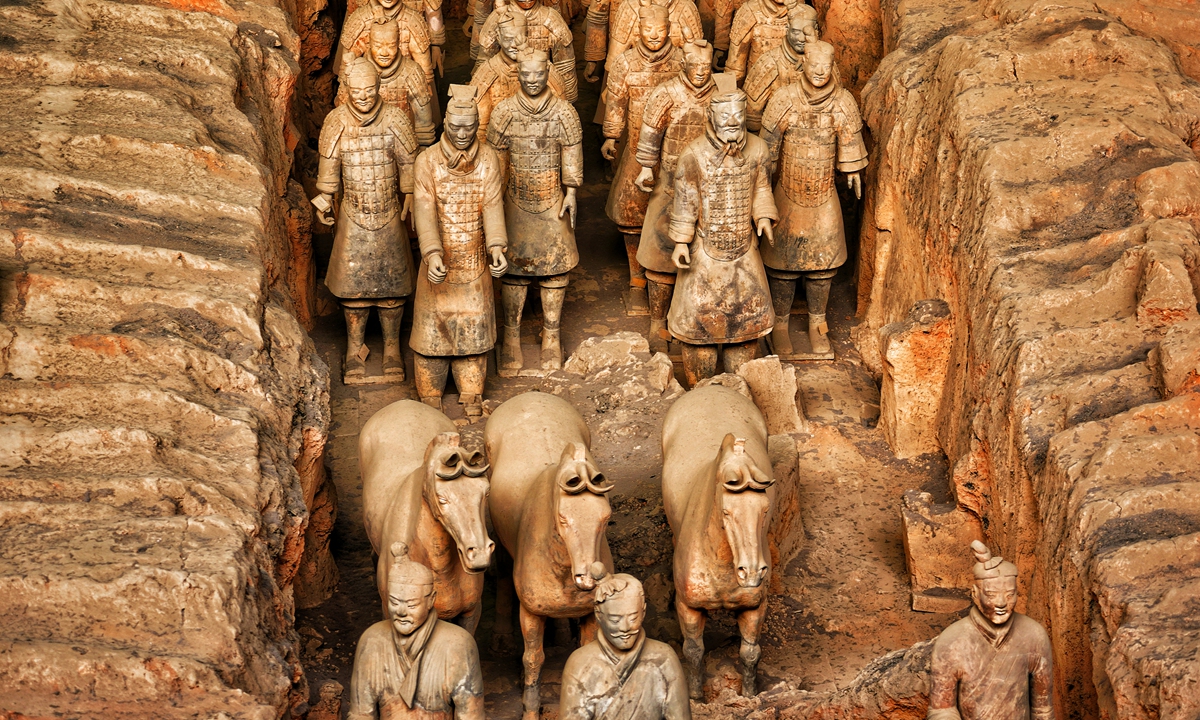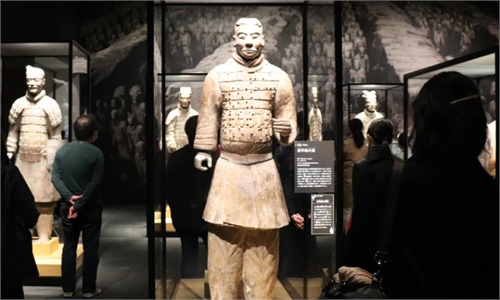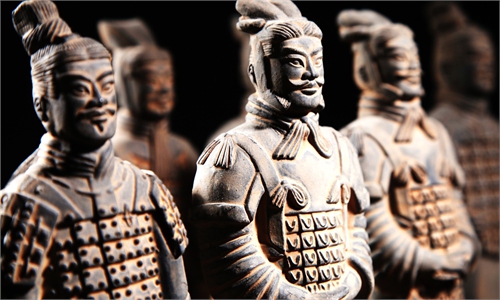ARTS / CULTURE & LEISURE
Archaeologists gain insight into creation of Terracotta Warriors
3rd excavation of Qin Shi Huang’s tomb proves fruitful

Terracotta Warriors Photo: VCG
Discoveries made during the latest excavation of Pit No.1 at the Mausoleum of Qin Shi Huang, China's first emperor, in Northwest China's Shaanxi Province, have allowed Chinese archaeologists to gain more insight into the process that was used to make the world-famous Terracotta Warriors and their weapons.According to a recent report released by the China National Cultural Heritage Administration, archaeologists have restored more than 140 Terracotta Warriors, during which time they discovered that the arms of these figures were created separately and then attached to the bodies and covered in a layer of fine clay. The carving of fine details was completed before the arms were attached.
Additionally, the pit has yielded a variety of weapons, including long-range attack weapons, shields for defense, as well as drums and drumsticks used for commanding soldiers.
"The Terracotta Warriors can be seen as large sculptures. As artworks, the revelations we learned about the creation process allows us to look into ancient Chinese sculpture making. The Terracotta Warriors used a very special mechanism to connect pieces together, such wisdom was unique to China," Lü Qiuxia, an expert on ancient Chinese art, told the Global Times on Wednesday.
Lü added that the way the warriors were made differed based on their social status and class.
"When analyzing how they were made, we noticed that the warriors were divided into different classes. This contributes to research into the burial culture of the Terracotta Warriors," the expert noted.
Through excavations, Chinese researchers have established the types and arrangement of weapons used by the Terracotta Warriors as well as the formations and patterns of the mysterious underground army.
The discovery of some ruins in a tunnel leading off from the pit also grabbed the attention of experts as it looks as if at one point in time someone had tried to dig a tunnel into the pit.
The third excavation of Pit No.1 lasted from 2009 to 2022 and covered an area of about 430 square meters. More than 220 terracotta figures, 16 terracotta horses, four chariots and other cultural relics such as weapons and production tools were discovered.
There is another archaeological discovery in Shaanxi Province rich in cultural heritage. Archaeologists excavated remains of some buildings such as temples, dwellings and shops as well as sculptures with features of both Han and Mongolian ethnic groups at the Qingpingbao Ruins.
There was originally a high building at the center of the ruins, which dated back to the Ming Dynasty (1368-1644), that connected the four main streets in the ancient city. The unearthed clay statues can be divided into two categories, Han and Mongolian, reflecting the exchanges, integration and equal coexistence of the Mongolian and Han peoples.
It is believed that this site served as a market between the two groups during Ming Dynasty while also serving as a defensive site. The ruins demonstrate the fusion of different ethnic groups in ancient China, experts noted.



